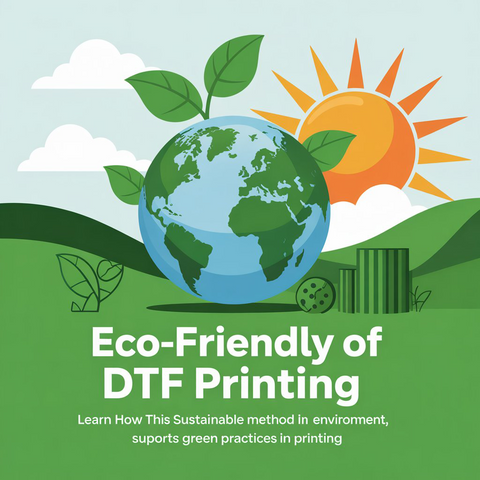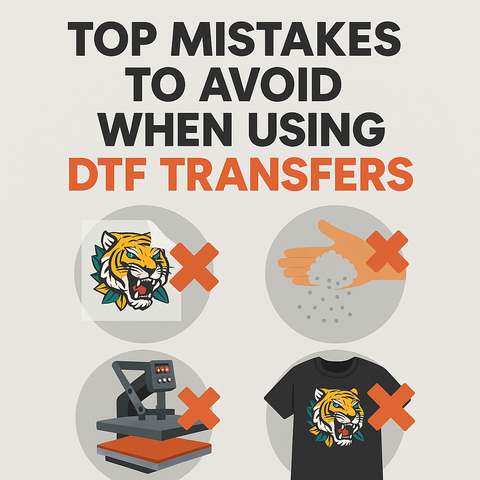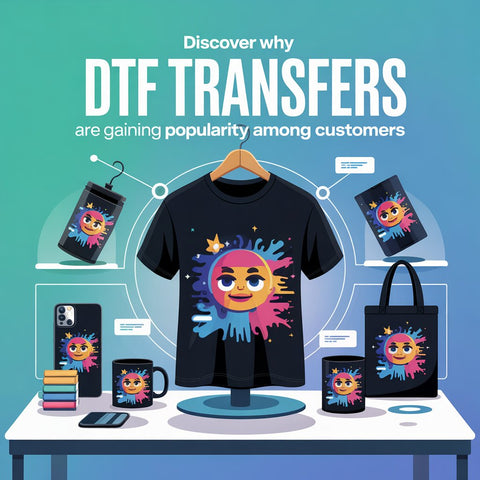Frequently Asked Questions
1. What is DTF printing and how does it work?
2. What are the environmental benefits of DTF printing?
3. How can consumers ensure they are choosing eco-friendly DTF transfers?
4. What role do materials play in the sustainability of DTF printing?
5. What can individuals do to promote sustainability in the printing industry?
In recent years, the printing industry has witnessed a significant shift towards sustainable practices, and one method gaining traction is Direct to Film (DTF) printing. This innovative technique offers not only high-quality custom DTF prints but also opens the door for eco-conscious decision-making. In this article, we will delve into the environmental impact of DTF transfers and explore sustainable practices surrounding this printing method.
Understanding DTF Printing
DTF printing is a cutting-edge method that involves transferring ink from a special film onto fabric, allowing for vibrant designs and detailed graphics. Unlike traditional printing methods, DTF printing eliminates the need for multiple screens or plates, reducing material waste and energy consumption. As the demand for custom DTF prints grows, it’s essential to understand the environmental implications and seek eco-friendly alternatives.
The Environmental Benefits of DTF Transfers
DTF transfers come equipped with a variety of environmental benefits:
- Reduced Water Usage: Unlike many traditional printing methods, DTF printing requires minimal water, addressing one of the pressing issues in the textile industry—water scarcity.
- Less Chemical Waste: DTF printing operates with a closed-loop system, meaning less ink and chemical waste are generated during the transfer process.
- Energy Efficiency: The process uses significantly less energy compared to conventional printing technologies, making it a greener alternative.
The Role of Materials in DTF Transfers
The materials used in DTF printing play a pivotal role in determining its environmental impact. From the ink to the films, understanding these components is crucial for those looking to minimize their ecological footprint.
Sustainable Inks
Many DTF printing companies are transitioning to eco-friendly inks, which are often water-based and less harmful to the environment than solvent-based options. These inks help reduce air pollution and lower the overall carbon footprint associated with the printing process.
Eco-Conscious Film Choices
The film used in DTF transfers is another factor to consider. Opting for films made from recyclable materials can increase the sustainability of the printing method. By choosing high-quality films, you not only ensure the longevity of your prints but also promote circular economy practices.
Choosing the Right DTF Transfers Sample Pack
When selecting a DTF transfers sample pack, consider vendors that prioritize sustainability. Look for those who commit to using eco-friendly materials and methods. By supporting businesses that emphasize environmentally friendly practices, you're contributing to a larger effort to reduce the environmental impact of the printing industry.
Supporting Local and Sustainable Printing Businesses
Purchasing DTF transfers from local companies can significantly reduce the carbon footprint associated with transportation. Furthermore, shopping local encourages businesses to adopt sustainable practices, as they cater to a community that values eco-consciousness.
Innovative Practices in DTF Printing
Aside from selecting sustainable materials, there are numerous innovative practices being implemented in DTF printing that contribute to environmental sustainability. These practices not only enhance the quality of custom DTF prints, but they also align with greener production methods.
Utilizing Digital Technologies
One of the significant advancements in DTF printing is the integration of digital technologies. Digital printing eliminates the need for physical setups and reduces waste associated with intermediate materials. By utilizing these technologies, businesses can minimize their environmental impact while producing top-quality prints.
Effective Resource Management
Effective resource management is critical for sustainability. Businesses can implement practices such as:
- Conducting regular audits to track material waste
- Implementing recycling programs within their production process
- Educating employees on eco-friendly practices and the importance of reducing waste
Consumer Awareness and Eco-Friendly Choices
As consumers, it’s essential to be aware of the environmental implications of the products we use. By choosing custom DTF prints that prioritize sustainability, you are not just making a purchase; you are making a statement about your values.
Educate Yourself and Others
Knowledge is power. Take the time to research the printing methods and materials used by different vendors. Share that knowledge with friends, family, and fellow consumers to promote a culture of sustainability in the printing industry.
Support Eco-Friendly Initiatives
Whenever possible, support brands and businesses that are committed to implementing sustainable practices. This may include companies that use recycled materials, support renewable energy, or promote sustainable fashion initiatives. Your choices can help drive the demand for more eco-friendly practices across industries.
The Future of DTF Transfers and Sustainability
The future of DTF printing looks promising, especially as more companies recognize the importance of sustainability. With ongoing research and technological advancements, we can expect to see further improvements in eco-friendly materials, inks, and printing processes.
Industry Collaboration
Collaboration among industry stakeholders can significantly enhance sustainability efforts. Partnerships between manufacturers, suppliers, and consumers can lead to the development of new eco-friendly technologies and practices that benefit the entire ecosystem. By working together, we can inspire change and promote sustainable behaviors throughout the printing community.
Certification and Standards
As sustainability becomes increasingly vital, the establishment of industry standards and certifications will be essential. These frameworks can help consumers identify brands that meet specific environmental criteria, enabling more informed choices when purchasing DTF transfers or custom DTF prints.
Personal Responsibility in Sustainable Printing
As individuals, it’s crucial to reflect on the ways we can contribute to sustainability. Every choice matters. By being mindful of the products we choose and their environmental impact, we can collectively make a difference.
Engage with Your Community
Engaging with local environmental organizations and community initiatives can enhance your understanding of sustainability. Participating in discussions and events can help raise awareness in your community regarding the benefits of eco-friendly printing practices, including DTF transfers.
Make Informed Purchases
Whether you are a business owner or a consumer, always opt for sustainable options when shopping for custom DTF prints or a DTF transfers sample pack. Look for transparency in the supply chain and prioritize brands that demonstrate a commitment to eco-friendly practices.
Unlocking a Greener Tomorrow
The environmental impact of DTF transfers need not be a concern when executed with sustainability in mind. By selecting eco-friendly materials, adopting innovative practices, and supporting businesses that prioritize sustainable methods, we can collectively foster a greener future in the printing industry. Together, we can ensure that DTF printing not only meets our creative needs but also aligns with our responsibility towards the planet. Embrace eco-friendly printing today for a brighter tomorrow!





Comments (0)
There are no comments for this article. Be the first one to leave a message!